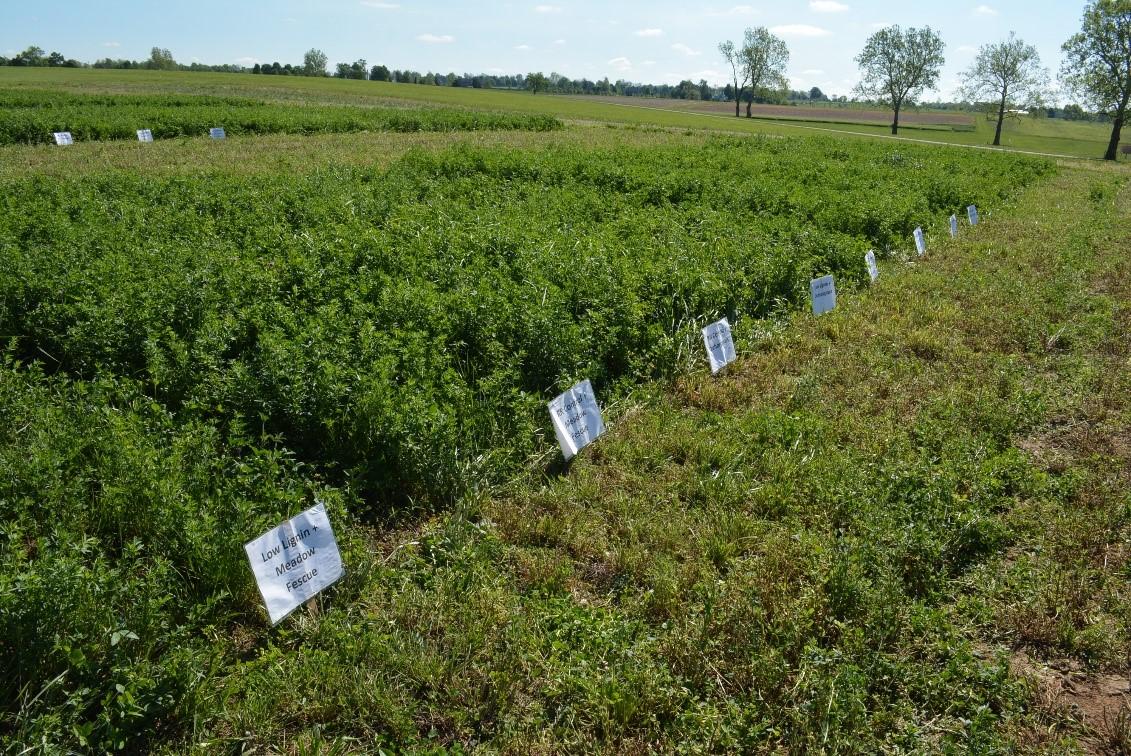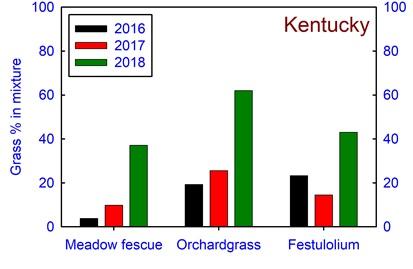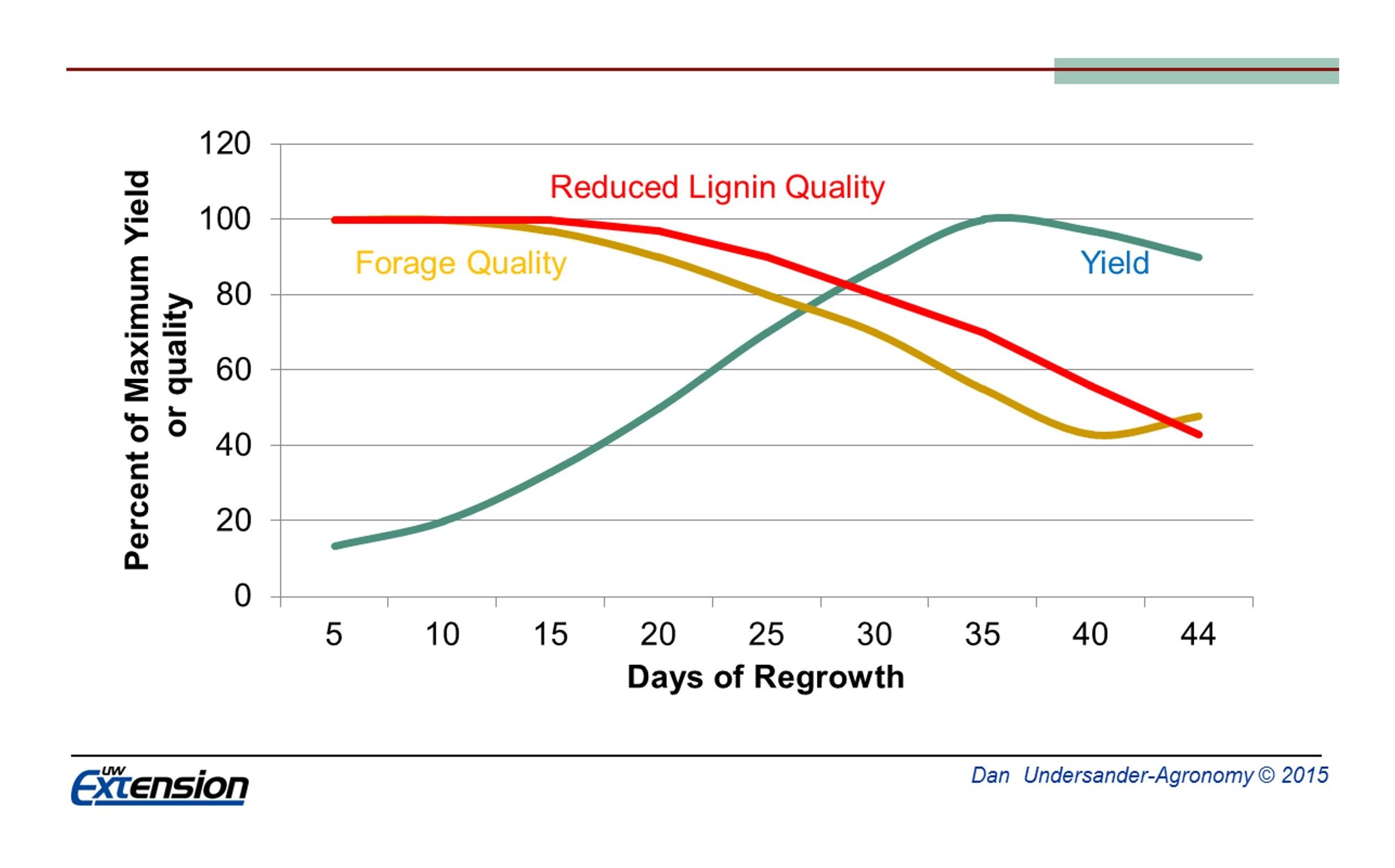Does Low-Lignin Alfalfa Make Sense for Kentucky Producers?
By Ray Smith, Forage Specialist, University of KY

You may have heard about a new type of alfalfa on the market the last few years. It’s called “Low-Lignin” alfalfa, though seed companies prefer to call these new varieties “Reduced Lignin” alfalfa. The value of reduced lignin alfalfa is higher digestibility. Lignin in plants is like steel reinforcing rods in concrete. The steel rods do not take up much volume, but they greatly increase the strength of the concrete. In the same way, lignin fibers in plants provide the strength for the plant to stand up. In trees there is often over 25% lignin, and in alfalfa and grasses cut for hay, lignin ranges from 4 to 7%. But since lignin is indigestible, then the more lignin, the less digestible the forage is. And with every 1% increase in lignin, forage digestibility drops by 4%, because lignin also makes the other fibers less digestible. That’s why it is so important to harvest hay before plants are overmature. Conversely, small decreases in lignin greatly increase digestibility. That’s where low or reduced lignin alfalfa varieties come in. Lignin is reduced slightly, so the plants are more digestible, but there is still enough lignin to allow the plants to grow normally and not lodge.


A recent research study conducted by the Univ. of KY, Cornell (NY) and Univ. of MN compared the yield and nutritive value of reduced-lignin alfalfa (HarvXtra 14376) vs. standard alfalfa (WL 355RR) in pure stands and in mixtures with three perennial grasses [Fojtan festulolium, BARFpF32 meadow fescue, and Dividend VL orchardgrass (Figure 2)]. The forages were seeded into prepared seedbeds on University farms in the spring of 2016 (Figure 1). Both alfalfa varieties were Roundup ReadyR with 4 fall dormancy rating. Harvests were taken at the bud and flower stages during 2016, 2017 and early 2018. Note: Producers who plant Roundup ReadyR alfalfa varieties in mixture with grasses typically start with pure alfalfa and maintain it weed free for one or two years with Roundup application, and then interseed with the desired grass species for the remaining years of the stand.
The reduced-lignin variety averaged 14.1% less acid detergent lignin and 5.9% greater neutral detergent fiber digestibility, compared with the standard variety. Forage yields were slightly higher for the standard alfalfa vs. the reduced-lignin variety. Mixed alfalfa-grass stands had similar yields to pure alfalfa, even though the percentage of grass/alfalfa varied by location and over years (Figure 3).

This research confirms that the major benefits from using low lignin alfalfa varieties come when harvest conditions are not ideal and cuttings are delayed. Reduced lignin varieties provide higher quality forage if harvested at same time as conventional varieties. In addition, they provide a wider harvest window without sacrificing quality (for example, when it’s raining at harvest). They can provide higher yields without sacrificing quality, since harvest can occur at a more mature stage (Figure 4). When combined with grass, they allow longer harvest intervals if grass growth is delayed.
Reduced lignin alfalfa varieties can provide benefits when harvested by grazing as well. Longer grazing intervals can provide more flexibility with rotational grazing systems and grazing more mature alfalfa stands also reduces the potential for bloat.
Acknowledgements to the other researchers involved with this project: Drs. J.H. Cherney and D.J.R. Cherney at Cornell University, Dr. C.C. Sheaffer and M.S. Wells, University of Minnesota, and Gabriel Roberts, University of Kentucky.
Categories:
Species/Varieties


